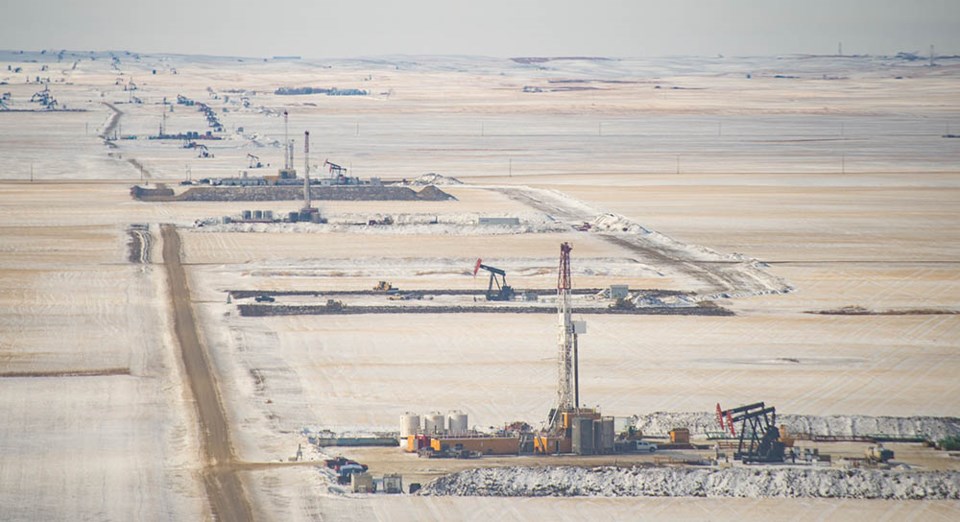Calgary – For the last several years, Crescent Point Energy Corp. has almost continuously been at the top of the leaderboard when it comes to the number of drilling rigs they employed in Canada. At times, their rig count exceeded the Number 2 and 3 spots combined. As a result, they have a unique perspective on the dramatic reduction in the drilling rig fleet in Canada since late 2014, from 811 rigs to 515 in Western Canada today.
Ryan Gritzfeldt is Crescent Point’s chief operating officer. He responded to our questions by email on Feb. 20.
Pipeline News: We’ve seen the drilling rig fleet in Canada drop from 800 about five years ago to 515 today. The Petroleum Services Association of Canada recently forecast a 10 per cent reduction in wells for 2020, from 5,000 to 4,500. But are rig counts and wells drilled the metrics we should be using today?
Ryan Gritzfeldt:A lot has changed in the last five years. In previous years, Western Canada ran over 90 per cent of the rigs that were registered. That probably won’t be the case any time soon as commodity prices have been low for quite some time.
You could say wells and metres drilled are more indicative metrics used today.
P.N.: For the last several years, Crescent Point has been leading the nation in the number of rigs working. A few years ago, you were running around 24-26 rigs in Canada at times. Now that number is closer to 16, yet you are still leading. How much of that reduction is due to reduced capital expenditures, and how much is due to higher rig efficiencies?
Gritzfeldt: In my opinion, it is a bit of both. For Crescent Point in particular, it’s a mix of reduced capital spending and a shift to longer lateral wells which results in fewer wells drilled to access the same amount of resource below surface.
P.N.: Your Oct. 31 conference call noted that Crescent Point is drilling more and more two-mile long laterals in the Flat Lake area. Can you explain your progression to this point, and how that reflects on the larger numbers like well and rig counts?
Gritzfeldt: Technology advancements have enabled us to extend our laterals and optimize hydraulic fracturing over a greater reservoir distance. Our shift to two-mile wells has resulted in significant cost savings and has allowed us to minimize our surface footprint, as we can reach a larger amount of resource from one surface well bore.
P.N.: Are you drilling multilaterals? If so, does that still count as “one well,” or multiple?
Gritzfeldt: Crescent Point does not typically drill multilateral wells. However, it would generally count as one well.
P.N.: There’s been a continual increase in frac stages over the past decade and a bit. How has that affected both well performance and these metrics? How many stages might you do in a two-mile long Flat Lake well?
Gritzfeldt: A one-mile lateral will typically have 25 frac stages and a two-mile lateral will have approximately twice that at 50. We continually assess and adapt our frac designs to meet the specific conditions of the well and the geological formations we are targeting.
P.N.: North Dakota used to run around 180 rigs before the downturn hit. Now that number is closer 52 to 65, yet they are setting production records each month. Their Department of Mineral Resources told us in 2018 that North Dakota rigs are now roughly two times as efficient as they used to be, drilling three wells in a month instead of one. Crescent Point is still active there. Can you describe your experience? Are you seeing similar improvements in rig efficiencies?
Gritzfeldt: Yes. North Dakota used to drill wells in 20 days on average back in 2014. The average with the newer triple drilling rigs has been averaging just under 12 days. On the Saskatchewan side we’ve also seen improvements in recent years with average drilling days dropping from 18 to 12 as a result of new efficiencies and optimized processes.
P.N.: What are the key factors in increased rig efficiency? Polycrystalline diamond cutter bits? Different muds? Solids control? Higher horsepower mud pumps? Pad drilling with walking rigs? Or is it something else?
Gritzfeldt: Yes, there are many factors:
- Many rigs now have three mud pumps instead of two which is more efficient as the rig can run the same liner sizes for power in the intermediate and lateral hole sections. This saves considerable time for the rig crews.
- Larger pads (4 to 8 well pads vs mainly single well pads back in 2014/2015) have significantly cut down on the number of rig moves and kept the operations more efficient overall.
- Continued improvement in bit cutter technology has increased bit effectiveness and durability.
P.N.: There are hundreds of racked rigs, many of which have been that way over five years. Do you expect any of those rigs to work again?
Gritzfeldt: It is hard to say, obviously it is an entirely different mindset in a $50 to $55/bbl WTI world where there is a lack of market access (no pipelines being built), disabling producers from realizing competitive pricing. These factors obviously directly impact investment decisions of producers.
P.N.: What metrics should we be using, going forward? Is metres drilled now king, over well count or rigs working?
Gritzfeldt: If you’re asking about what metrics to look at to measure the health of the industry, sure you could use metres drilled as there have been recent advancements in pad drilling and longer laterals.



